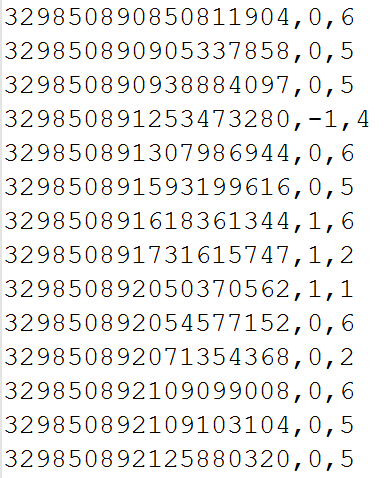
Datasets
Please refer to the papers for more details on the datasets available on this page. Drop me an email axsun AT ntu DOT edu DOT sg if more information are needed regarding these datasets.
DocOIE Dataset
DocOIE is a document-level context-aware dataset for Open Information Extraction. DocOIE consists of evaluation and training dataset. Evaluation dataset contains 800 expert-annotated sentences, sampled from 80 documents in two domains (healthcare and transportation). Training dataset contains 2,400 documents from the two domains (healthcare and transportation); 1,200 documents in each domain. All sentences from these documents are used to bootstrap pseudo labels for neural model training. Note: Only document IDs are included in DocOIE Training dataset, for document collection at PatFT. Dataset download and more details at Github: https://github.com/daviddongkc/DocOIE Please refer to the following paper for more detailed description of the dataset.- Kuicai Dong, Yilin Zhao, Aixin Sun, Jung-Jae Kim, Xiaoli Li; DocOIE: A Document-level Context-Aware Dataset for OpenIE. ACL'21 Findings [ PDF@ACL Anthology].
HSpam14 Dataset
The HSpam14 dataset described in our SIGIR 2015 paper is available at links offered by Dropbox and/or Microsoft OneDrive. The dataset in compressed format HSpam14_dataset.zip is about 74.7MB and the uncompressed version HSpam14_dataset.txt is about 308MB.The text file contains three columns: tweet_id, label, and step (see sample data on the right). The label field contains one of three values {0, 1, -1} where: 0 is for ham (or non-spam tweet), 1 is for spam tweet, and -1 is for those tweets that can not be labeled as spam or ham even after manual inspection. The step field contains values from 1 to 6, describing at which step the tweet was labeled during the labeling process:
1 => Manual annotation

2 => kNN-based annotation
3 => User-based annotation
4 => Domain-based annotation
5 => Reliable ham tweet detection
6 => EM-based annotation
Please refer to the following paper for more detailed description of the dataset.
- Surendra Sedhai and Aixin Sun. HSpam14: A Collection of 14 Million Tweets for Hashtag-Oriented Spam Research. SIGIR '15 [ PDF ].
Wikipedia Keyphraseness
This dataset contains a collection of keyphraseness values for phrases extracted from Wikipedia articles. The keyphraseness value Q(s) of a phrase s is the probability that the phrase appears in a Wikipedia article as being anchor text. In total, 4,342,732 phrases are extracted from the English Wikipedia dump created on January 30, 2010. In this release, we remove the 184,979 phrases containing non-English characters. Among the remaining 4,157,753 phrases, about 1.9 million phrases have non-zero keyphraseness values. This dataset contains one text file and a readme file in zip format (about 45MB in size). The dataset can be downloaded through links by Dropbox or Microsoft OneDrive .This dataset has been used in the following 3 papers. Please refer to the papers for more details about the dataset and how the keyphraseness values can be used in various tasks (All papers can be downloaded freely from ACM digital library using the links below). This dataset is released solely for research purposes. Please cite at least one of the following 3 papers if you use this dataset in your research.
- Chenliang Li, Aixin Sun, Jianshu Weng, Qi He. Exploiting hybrid contexts for Tweet segmentation. SIGIR 2013 [ PDF, ACM Link, Bibtex]
- Chenliang Li, Aixin Sun, Anwitaman Datta. Twevent: segment-based event detection from tweets. CIKM 2012 [ PDF, ACM Link, Bibtex]
- Chenliang Li, Jianshu Weng, Qi He, Yuxia Yao, Anwitaman Datta, Aixin Sun, Bu-Sung Lee. TwiNER: named entity recognition in targeted twitter stream SIGIR 2012. [ PDF, ACM Link Bibtex]
Tag Visual-Representativeness
The data set used for computing the Image Tag Clarity is available online at NUS-Wide. The normalized image tag clarity scores for the 5981 most popular tags are available in Excel format. Note that, the values reported here might be slightly different from the values reported in the WSM'09 paper due to the different number of dummy tags used for estimating the expected image clarity scores. The mean/std of image clarity scores for a given frequency reported here are estimated through 500 dummy tags (see MM'10 paper). Please cite the following papers if you use the above results in your work (e.g., filtering tags by visual concepts, visual representativeness, or others). Tag labels used in MM'10 paper experiments are available in Excel format. Please drop me an email at axsun AT ntu DOT edu DOT sg if you have any comments regarding the paper or the experimental results.- Aixin Sun, Sourav S. Bhowmick. Quantifying Tag Representativeness of Visual Content of Social Images. In Proc. of ACM Multimedia ( MM'10), Pages 471-480. Firenze, Italy. Oct 2010. [ PDF, BibTex].
- Aixin Sun and Sourav S. Bhowmick. Image Tag Clarity: In Search of Visual-Representative Tags for Social Images. In Proc. of the 1st ACM SIGMM Workshop on Social Media (WSM09) in conj. with ACM MM, Pages 19-26. Beijing, China. Oct 2009. [ PDF, BibTex]
Comments-Oriented Document Summarization
Blog Summarization Dataset used in SIGIR08 paper is available here. Please refer to the following paper for detailed description of the dataset and cite the paper if you use the dataset.- Meishan Hu, Aixin Sun, and Ee-Peng Lim. Comments-Oriented Document Summarization: Understanding Documents with Readers' Feedback. In Proc. of 31st Annual International ACM SIGIR Conference on Research and Development on Information Retrieval (SIGIR08). Pages 291 -- 298. Singapore. July 2008. [ PDF , BibTex]
- Meishan Hu, Aixin Sun, and Ee-Peng Lim. Comments-Oriented Blog Summarization by Sentence Extraction. In Proc. of ACM Conference on Information and Knowledge Management (CIKM07). Pages 901-904. Lisboa, Portugal, Nov, 2007. [ PDF, BibTex]
Web Unit Mining (UnitSet)
The UnitSet is the one used for Web Unit Mining project. The dataset is created based on the WebKB dataset which is available at Web->KB project. Please cite any of the following two papers if you would like to use UnitSet in your experiments:- Aixin Sun and Ee-Peng Lim, Web Unit Based Mining of Homepage Relationships, Journal of the American Society for Information Science and Technology (JASIST), 57(3):394-407. February 2006. [ PDF, BibTex]
- Aixin Sun and Ee-Peng Lim, Web Unit Mining: Finding and Classifying Subgraphs of Web Pages. In Proc. of 12th ACM International Conference on Information and Knowledge Management (CIKM 2003), pp. 108-115, New Orleans, LA, USA, Nov. 2003. [ PDF, BibTex]
-
 Publications
Publications
Most of recent papers are here -
 Research Team
Research Team
My research team and projects -
 Datasets
Datasets
Datasets used in our research -
 Teaching
Teaching
As an instructor and tutor